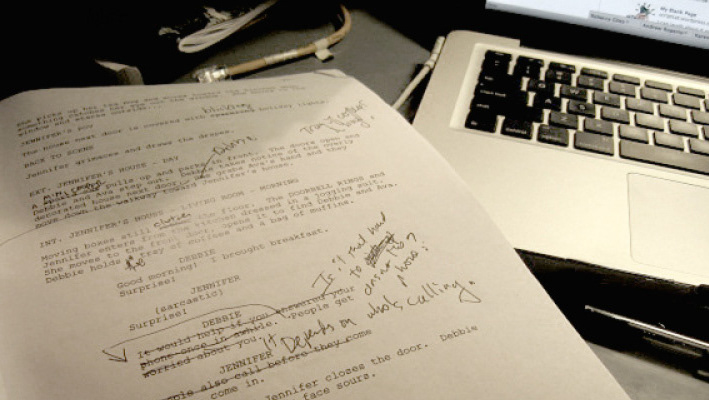Alright, let's do this one more time.
Tonight we're discussing semiotics. For those of you who don't know, semiotics can be defined like this:
semiotics
noun
the study of signs and symbols and their use or interpretation.
noun
the study of signs and symbols and their use or interpretation.
For those of you who did know that, fantastic, you've read words you didn't need to. Now, let's get down to business. We're going to take a look at a movie poster, specifically the movie poster of Fantastic Mr Fox, and take a look at the signs and symbols in it, and their use/interpretation. For those of you who want to follow along at home, here's what we're looking at.
Ignoring the amount of text on it that really could have been avoided, we're going to get right down into it.
Right off the bat, we can see a few things in the background, namely the stupid amount of Bean's Cider, which is a nice nod to them stealing said cider in the movie as well as letting us know that there's a high likelihood that it'll play a big part in the film as it's, well, everywhere in the background. The other boxes of food mixed in with it could be from the other two farmers of the three antagonists, but unfortunately it's a bit difficult to tell.
In addition, the main protagonist looking pleased with himself center frame tells us that they'll be playing an antagonizing protagonist, try saying that five times fast. Alongside other Easter eggs, Mrs Fox has paintbrushes in her dress, hinting at her artistic nature.
Let's take a look at the text on the poster, specifically the title. First impressions is that it's clean, it's simple, and the slight shadowing helps it stand out from the backdrop. The use of yellow could have been a choice from the main characters clothing being a mix of yellows and reds, but it also could have been because yellow tends to signify energy and happiness. Yellow can also signify danger and a lot of the film borders on that edge between energetic and happy while also being barely ahead of the danger they've brought upon themselves within the first act of the film.
With this in mind, the red of the texts, specifically the quotes on the upper portion of the poster, are the other side of that coin. While they don't remove anything from the yellow, they add in to the main characters coloration, most prominently Mrs Fox's dress, and remind us that there's a sense of romanticism and passion behind the situation that Mr Fox has put his family and his community into, as he's doing it for his family.
Next, let's look at the different characters that have been put around the poster. In the top right hand corner, we have the the shovel, leg, and jacket of one of the farmers of the story who is placed above the main characters, a nice nod to the majority of the film taking place with the characters underground.
Front and center are Mr Fox and Mrs Fox, dressed in signature suit and dress, and alongside them to the left is Kylie Opossum, who is Mr Fox's right hand man, and Coach Skip, who isn't a major character but is there nonetheless. Off to the right hand side, we have Kristofferson doing what I believe is yoga, and Ash who is doing finger guns and wearing a sock as a bandit hat. Both Kristofferson and Ash play a prominent part of the film as Kristofferson as Ash's main obstacle in his story arc. Behind Ash we see Clive Badger, who is Fox's lawyer and an interesting minor character within the film. We are going to ignore the rabbit on the left hand side there because I actually have no idea why they are there, or why they're upside down, as I'm pretty sure they're the child of the rabbits.
Each of these characters are portrayed as key aspects of themselves in how they're positioned. Mr Fox is positioned in a cocky manner with a smirk with Mrs Fox hanging off of him as if they were dancing, a lovely nod to her artistic mannerisms. Kylie Opossum is looking uncertain and spaced out, a key feature of his character. Kristofferson is doing yoga/meditating, which is his main characteristic and simultaneously his most annoying feature. Ash, with his finger guns and sock bandit hat, has his trusty cape on as if he's acting as his favourite superhero, something that he learns to shuck throughout the film. Clive Badger is, honestly, just kind of there and his presence can go unnoticed throughout a good portion of the film, which is unfortunate because, as mentioned earlier, he's an interesting minor character with the parts he plays in the film, as well as Coach Skip who has a momentary part of the film.
Even outside of the characters, the backdrop of the acorns sprouting is a subtle hint of the significance for the new house that Mr Fox buys for his family.
Each aspect of the poster has been carefully considered and crafted to be part of the film experience, which takes more meaning when you know that Fantastic Mr Fox was made with stop-motion and individually crafted objects for everything, including background characters and tiny newspapers which are actually legible in the film.
Something that Wes Anderson fans will notice is that the poster is as symmetrical as it could be, and as this is just one of several different variations for different countries, there's a whole load of other ones to take a look at.
Even if you aren't a Wes Anderson fan, the Fantastic Mr Fox poster screams his style, from the symmetry to the detail in every object. It oozes comfort to us, and while it's not a specific object or aspect of the poster that causes that feeling, it's just satisfying to look at and that makes it even better. Personally, looking at the poster for Fantastic Mr Fox makes me want to re-watch it, and while it's nothing groundbreaking, it is a good movie and it has plenty of little Easter eggs throughout the entire film, one of which is a graffiti sign saying "cuss"!
The poster is fairly simplistic, but the meaning and significance behind the objects can be deeply analyzed. It's an enticing and fantastic, pun intended, visual representation of the film itself, laying out important details of characters and the plotline. Each main character displays key beats of their arcs throughout the film, though Clive Badger, Coach Skip and the rabbit are, as previously said, just sort of there.
The presence of the characters in their display of their own characteristics was a key element to the poster, as it eased you into the film without knowing it. The movie posters, as well as the trailers, have become part of the movie going experience, though it is worth mentioning that there are people who don't watch trailers before they see the film. Each individual person can draw their own conclusions from the posters as well as the trailers, and the entire film itself, and they won't necessarily be wrong about any of it. Unless you somehow managed to think that the farmers are meant to be the protagonists, in which case you might have watched the film backwards somehow, but nevertheless it's an outlook on the subject that is viable, however unlikely.
Bringing this to a swift conclusion; the colours, characters, design, and placement of every single aspect of the Fantastic Mr Fox poster has been excellently crafted, meticulously created, and outstandingly placed. Nothing seems out of place, nothing looks like it couldn't exist, even though some of the things, I'm looking at you bandit hat made from a sock over the head of a fox, are just outright weird and whimsical. It's not perfect, as nothing can be objectively perfect, but it's a piece of media that just makes you feel right, which is something that it quite difficult to do, especially in this age of small segments of media being main information and entertainment sources.
I can't say that I've analyzed everything on the subject, but that's all for today, see you next time!
References:
Chandler, D. (2007). Semiotics : The basics. Retrieved from https://ebookcentral.proquest.com
Oswald, L. R. (2012). Marketing semiotics : Signs, strategies, and brand value. Retrieved from https://ebookcentral.proquest.com
Thwaites, T., Davis, L., & Mules, W. (2002). Introducing cultural and media studies: a semiotic approach.
Hawan, M. (2018). An Analysis of Semiotic Signs Found in Movie Poster of Pirates of the Caribbean [Ebook]. SUMATERA UTARA. Retrieved from http://repositori.usu.ac.id/bitstream/handle/123456789/3357/130705136.pdf?sequence=1&isAllowed=y
de Reeper, M. (2019). How to Analyse Movies #2: Signs, Codes & Conventions | Film Inquiry. Retrieved from https://www.filminquiry.com/analyse-movies-signs/
Dong, Z. (2011). Multimodal Discourse Analysis of Movie Posters from Functional-semiotic Perspective (Master's). Shantou University.







